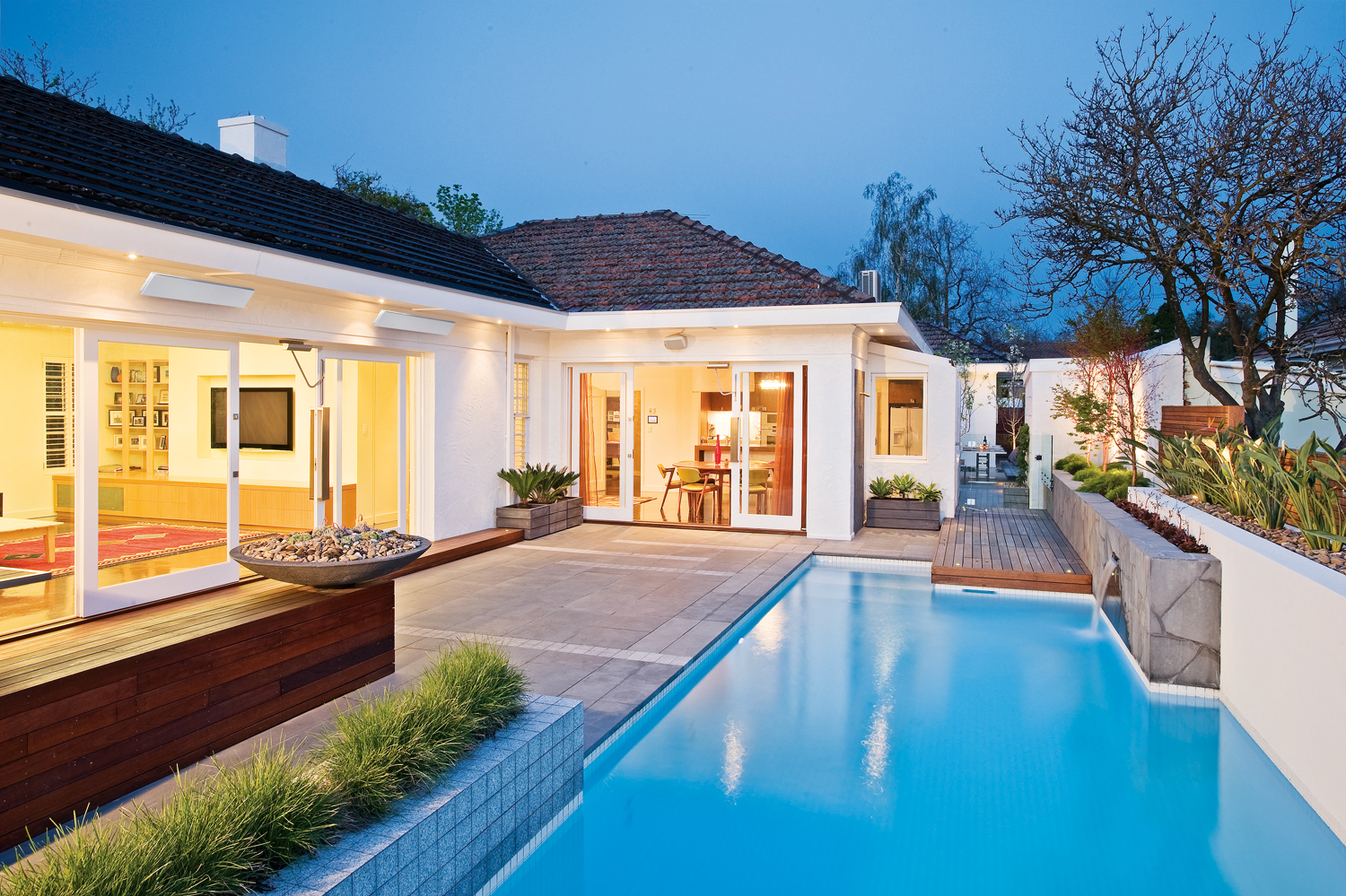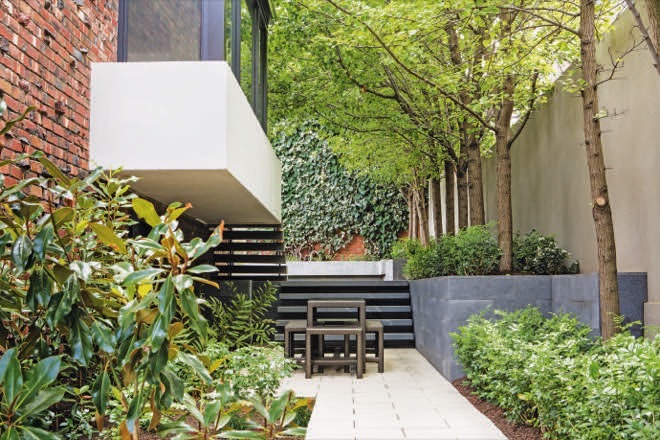Living through two world wars and The Great Depression, Rahiri – an overgrown, forgotten communal garden, has been transformed into a space that celebrates its difficult landscape and historic character
In 2003, Neil and Libby Harrison purchased the ground-floor apartment of a six-unit, two-storey Federation block built in 1910 and originally named after a mythical Maori god — Rahiri — by its New Zealand owners.
While Rahiri possessed a beauty that could only be gained from centuries of existence, the building, as well as its surrounding gardens, were in desperate need of some tender love and care. As avid gardeners, Neil and Libby set upon refurbishing the sloping, rugged communal garden and restoring Rahiri’s spirit.
As a retired school teacher, Neil had no formal training in garden design other than various personal projects and an inherent love of plants and landscapes. With not much more than some weed-infested, nutrient-deficient soil, an old brick shed, a rusty clothes line and a few overgrown tree ferns, Neil’s plan was to begin cleaning up the space and then let nature take its course.
“In creating a garden, the immediate environment dictates the ultimate design. I have never adopted an overly planned or structured approach but allow spontaneity and a degree of creativity to allow the garden to follow its own destiny,” he says.
In order to restore Rahiri and create a space that was safe and manageable for the residents, the steep, sloping landscape had to be addressed. A terraced method was implemented using retaining walls made from recycled sandstone that was lying around, as well as original Federation bricks from the renovation of Neil and Libby’s apartment. The terraces created various descending levels within the garden that can be accessed via a winding path, which leads visitors throughout the garden. Recycling became a running theme throughout the restoration of Rahiri, from repositioning plants to the creation of terraces and paths, as well as refurbishing the old brick shed (the original outhouse) into a functional workshop and shed. Handrails along the garden path were also erected using natural timber found in the nearby bushland.
Due to a row of pine trees that Neil believes would’ve been planted for screening purposes decades ago, this communal garden is denied of a harbour view and sits in shade for about nine months of the year. This dictated much of the plant palette, as did the poor soil quality. By adding compost and mulching, the aged, nutrient-deficient soil was reconditioned, giving the existing mature Murraya shrubs, tall tree ferns, single palm and clivia a healthier foundation, and providing the newly integrated vines, groundcover and succulents with a place to thrive.
A number of large plants from the block’s street courtyard, including golden cane, bird’s nest and tree fern, were replanted in the communal garden to enjoy the much shadier aspect. And in areas of filtered sunlight, pops of colour were introduced into the otherwise leafy plant palette through the use of Camellia Sasanqua, Impatiens and azaleas.
While Neil’s favourite part of the garden is the outhouse-turned-workshop, relishing in its staggering transformation, Libby enjoys the quiet retreat at the top of the descending stairway, where an off-cut of an old Port Jackson fig was rescued and set next to the fish pond (made from the original concrete laundry tub from the old outhouse).
Transformed from a run-down, overgrown, weed-infested space into a flourishing beloved communal garden, Rahiri is now ready to face the next 100 years.
Written by Karsha Green
Originally in Backyard Magazine, Volume 15 Issue 4




















